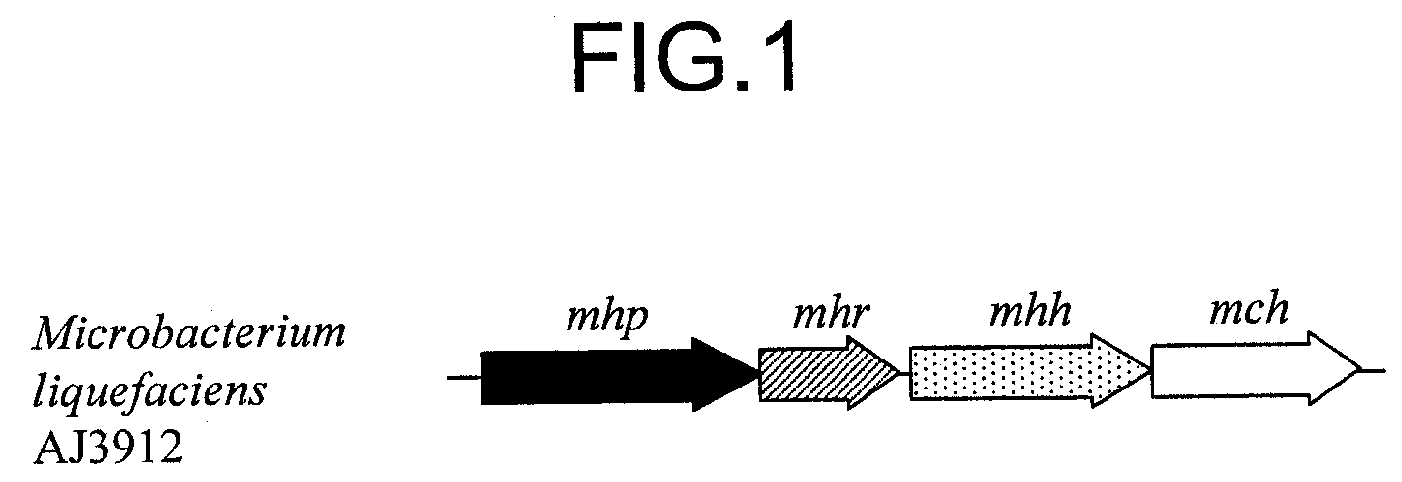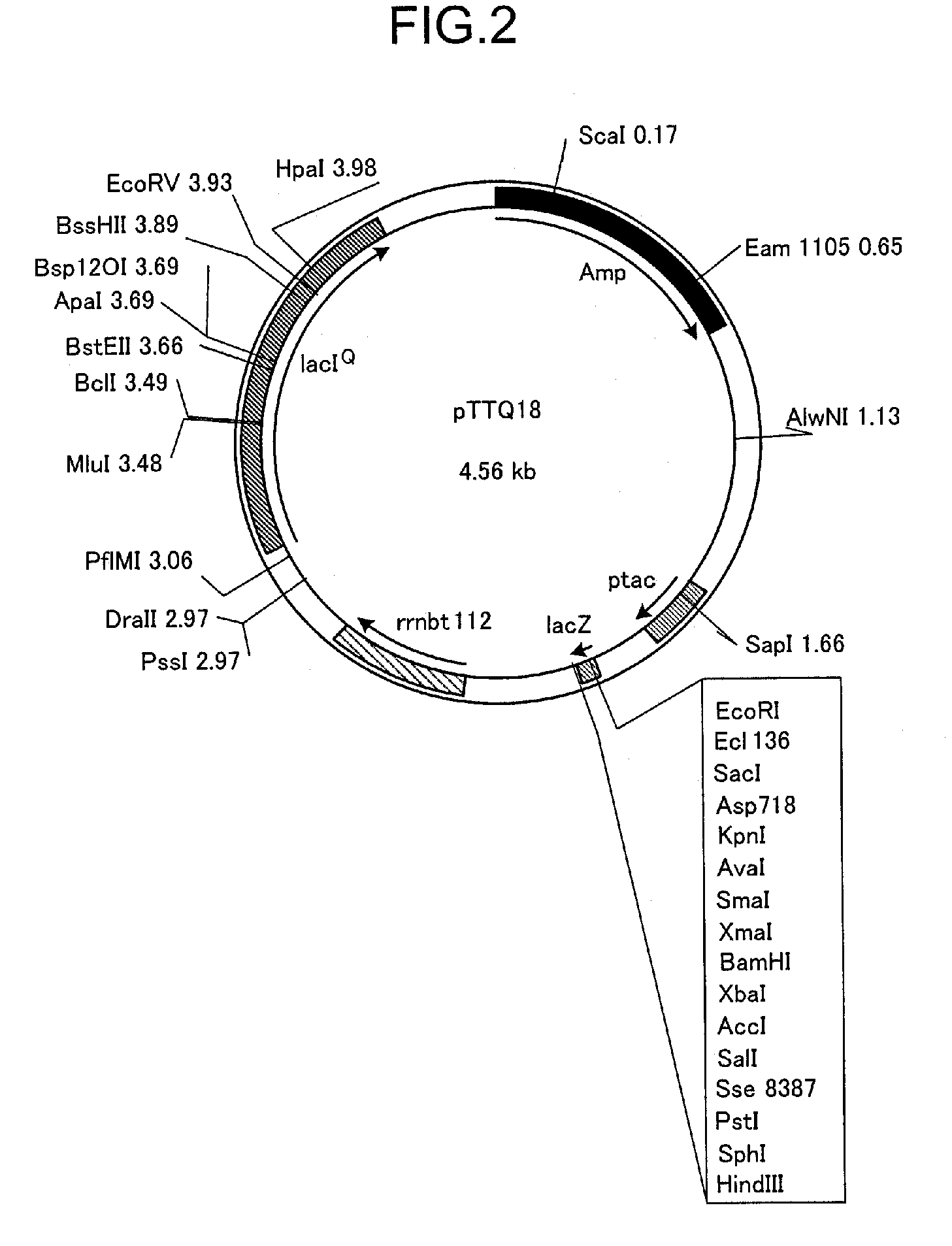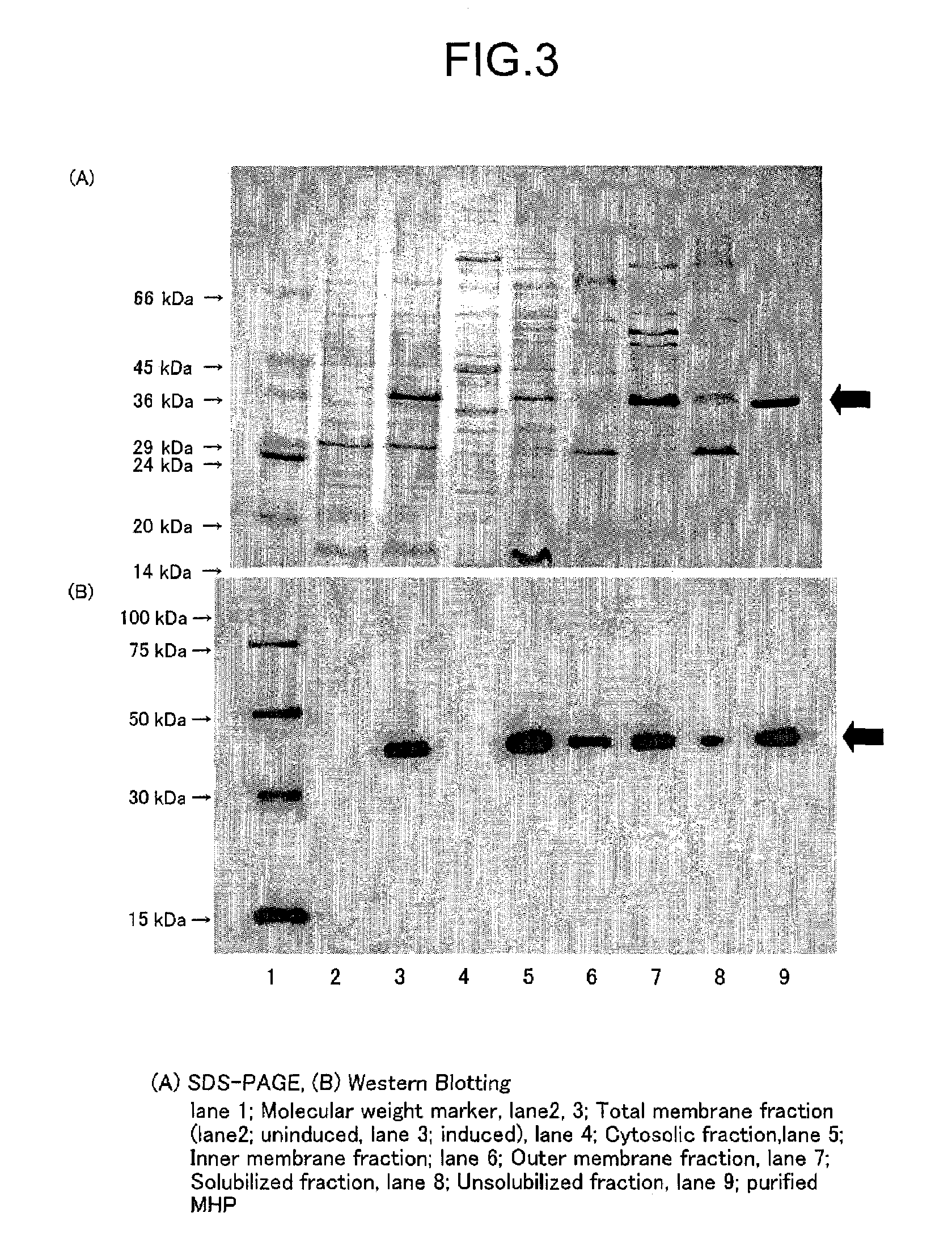Transporter protein
a transporter protein and protein technology, applied in the field of new transporter proteins, can solve the problems of insufficient research on the identification of such transporters, many genes encoding transporters are still unknown, and the processing of membrane proteins is difficult compared to soluble proteins, and achieves the ability of hydantoin compounds to be absorbed by the cell. excellent
- Summary
- Abstract
- Description
- Claims
- Application Information
AI Technical Summary
Benefits of technology
Problems solved by technology
Method used
Image
Examples
example 1
Preparation of the MHP Recombinant
[0180]1.1. Strain and Method for Cultivation
[0181]E. coli strain BLR was used for the analysis of MHP. The genotype of the E. coli strain BLR is presented below (Table 1).
[0182]
TABLE 1StraitsGenotypeSource / ReferenceBLRF−, ompT, hsdS B(rB−mB−), gal,Novagendcm Δ (srl − recA)306::TN10
[0183]1.2. Plasmid
[0184]Plasmid pTTQ18 was used to express the transporter. In order to confirm expression of the transporter and to facilitate purification, a plasmid was constructed with an RGSHis6-Tag inserted at the C-terminal end of the transporter according to the method described by Henderson, et al. MHP amplified by PCR was inserted between EcoRI and PstI among the multicloning sites of this plasmid, and the plasmid pSHP11H which expresses a protein containing the RGSHis6-Tag at the C-terminal (MHPH6 (SEQ ID No. 3)) was constructed and used. The E. coli strain BLR was transformed with this plasmid to obtain the MHP-expressing strain E. coli BLR / pSHP11H.
[0185]The st...
example 2
Preparation of Membrane Fraction
[0191]French pressing was performed in accordance with M. Futai (1978) Experimental systems for the study of active transport in bacteria, in Bacterial Transport (Rosen, B. P., ed.) pp. 7-41, Marcel Dekker Inc., New York.
[0192]A French press manufactured by Aminco (American Instrument Company, Illinois, USA) was used. The cultured and collected cells were resuspended in 15 mM Tris-HCl (pH 7.5) and were subjected to the French press at 20,000 psi. Cell debris and undisrupted cells were removed by centrifugation at 5,000 g for 20 minutes. The supernatant was then centrifuged at 150,000 g for 60 minutes, and the whole membrane fraction was recovered by precipitation. If fractionation is required of the inner membrane and outer membrane, the whole membrane fraction was resuspended in 20 mM Tris-HCl (pH 7.5), 0.5 mM EDTA and 10% glycerol (Tris-EDTA buffer), and was subjected to a sucrose density gradient consisting of 30, 35, 40, 45, 50 and 55% (w / w) solut...
example 3
Confirmation of MHPH6 Localization, Solubilization and Purification
[0196]3.1. Solubilization and Purification of MHPH6
[0197]For solubilization of MHPH6, n-dodecyl-β-D-maltoside (DDM) was used as the surfactant, and Ni-NTA Agarose (QIAGEN) was used for purification.
[0198]The inner membrane fraction prepared by the French press method was suspended in a solubilizing buffer solution (20 mM Tris-HCl (pH 8.0), 20 mM Imidazole (pH 8.0), 20% (v / v) glycerol, 0.3 M NaCl, 1% (w / v) DDM) to a final protein concentration of 4.6 mg / ml. The solution was moderately stirred on ice for 60 minutes and then centrifuged at 160,000 g for 30 minutes. The supernatant obtained by this centrifugation was taken as the solubilized fraction. The precipitate was suspended in an equal volume of buffer solution as the supernatant, to obtain the non-solubilized fraction. The solubilized fraction thus obtained was added to Ni-NTA agarose (QIAGEN) which was previously equilibrated with a buffer solution for washing ...
PUM
| Property | Measurement | Unit |
|---|---|---|
| pore size | aaaaa | aaaaa |
| pH | aaaaa | aaaaa |
| pH | aaaaa | aaaaa |
Abstract
Description
Claims
Application Information
 Login to View More
Login to View More - R&D
- Intellectual Property
- Life Sciences
- Materials
- Tech Scout
- Unparalleled Data Quality
- Higher Quality Content
- 60% Fewer Hallucinations
Browse by: Latest US Patents, China's latest patents, Technical Efficacy Thesaurus, Application Domain, Technology Topic, Popular Technical Reports.
© 2025 PatSnap. All rights reserved.Legal|Privacy policy|Modern Slavery Act Transparency Statement|Sitemap|About US| Contact US: help@patsnap.com



